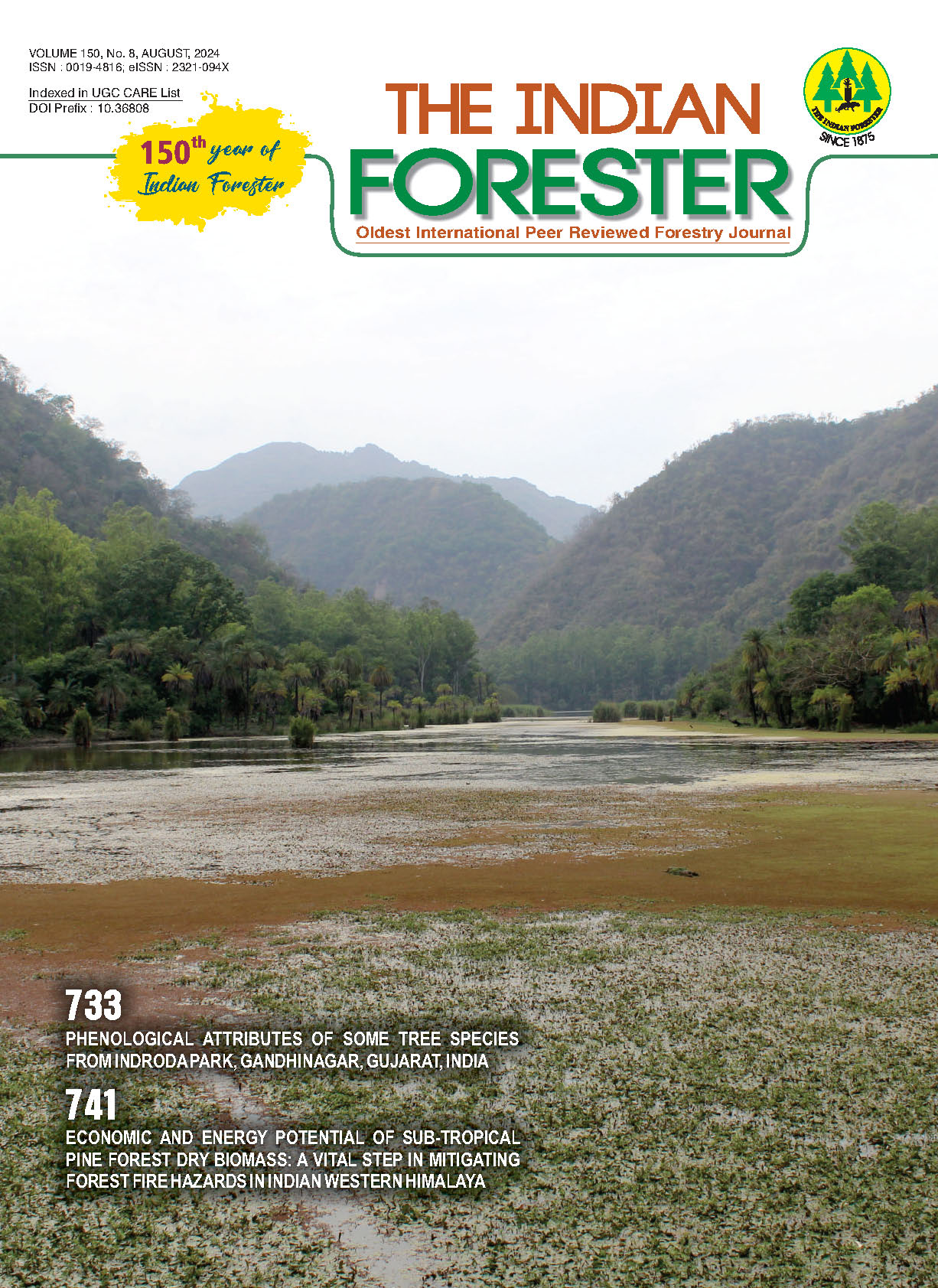Documentation of Indigenous Uses and Traditional Practices of Medicinal Plants by Jhecha Community of Upper Beas Valley, Kullu District in North West Himalaya- Ethnomedicinal Practices of Jhecha Community
DOI:
https://doi.org/10.36808/if/2024/v150i8/170180Keywords:
Jhecha, Community, Indigenous Uses, Upper Beas Valley, Traditional Practices, Medicinal Plants.Abstract
The present study was carried out during 2022 to 2023 to document the ethnobotanical knowledge of Jhecha community living in the upper Beas valley of Kullu district, Himachal Pradesh during. A total of 47 plant species belonging to 46 genera and 37 families were used by the Jhecha community. Various plant parts are used for curing ailments like cough/cold, headache, toothache, asthma/bronchitis, diarrhea/dysentery, digestive disorders, cuts/wounds, hair loss, skin ailments, fever, hair fall, menstruation problems, veterinary problems, etc. Awareness programmes for the Jhecha community on values, indigenous uses and traditional practices of medicinal plants and conservation are suggested.References
Amjad M.S. and Arshad M. (2014). Ethnobotanical inventory and medicinal uses of some important woody plant species of Kotli, Azad Kashmir, Pakistan. Asian Pacific Journal of Tropical Biomedicine, 4(12): 952-958.
Census (2011). Government of India Census 2011. Retrieved from www.censusindia.gov.in on 27.03.2023.
Chauhan N.S. (2003). Important medicinal and aromatic plants of Himachal Pradesh. Indian Forester, 129(8): 979-998.
Chowdhery H.J. and Wadhwa B.M. (1984). Flora of Himachal Pradesh, Analysis Vol. 1-3, Botanical Survey of India, Calcutta.
DevDFID O.P., Yadav N.P., Springate-Baginski O. and Soussan J. (2003). Impacts of community forestry on livelihoods in the middle hills of Nepal. Journal of Forest and Livelihood, 3(1): 64-77.
Dhaliwal D.S. and Sharma M. (1999). Flora of Kullu district, (Himachal Pradesh), (Bishen Singh Mehendra Pal Singh, Dehradun).
Jain S.K. (1991). Dictionary of Indian folk medicine and ethnobotany. Deep Publications.
Jain S.K. (1987). Manual of Ethno botany. In: Training Course and Workshop on Ethnobotany, Scientific publishers.
Kala C.P. (2005). Current status of medicinal plants used by traditional Vaidyas in Uttaranchal state of India. Ethnobotany Research and Application, 3: 267-278.
Kaur I., Sharma S. and Lal S. (2011). Ethnobotanical survey of Medicinal plants used for Different diseases in Mandi district, Himachal Pradesh. International Journal of research of Pharmacy and Chemistry, 1(4): 1167-1171.
Khullar S.P. (1994). An illustrated fern flora of the West Himalaya, Vol I, (International Book Distributors, Dehradun).
Khullar S.P. (2000). An illustrated fern flora of the West Himalaya, Vol II, (International Book Distributors, Dehradun).
Maikhuri R.K., Nautiyal S., Rao K.S. and Sexena K.G. (1998). Role of medicinal plants in traditional health care system: a case study of Nanda Devi Biosphere Reserve, Current Science, 75: 152-157.
Rao R.R. (1996). Traditional knowledge and sustainable development:keyroleofethnobiologists.Ethanobotany,8:14-24.
Samant S.S. and Pant S. (2006). Diversity, distribution pattern and conservation status of plants used in liver diseases/ailments in Indian Himalayan Region. Journal of Mountain Science, 328-47.
Samant S.S., Kishor K., Upreti B.M., Bharti M., Bohra N., Sharma P. and Tewari L.M. (2014). Diversity, distribution, indigenous uses and conservation prioritization of the economically important floristic diversity in Nadaun Block of Hamirpur District, Himachal Pradesh. International Journal of Biodiversity and Conservation, 6(7): 522-540.
Samant S.S.,Singh M., Lal M.,SharmaA.,BhandariS.,SinghA., Pant S. and Butola J.S. (2006). Diversity, distribution pattern and economic importance of the agroforestry trees and shrubs in Kullu district, HimachalPradesh. InProceedings of the Workshop on Status and Potential of Agro-forestry in North Western Himalayas (eds.Singh J,PanwarVP, SharmaK D and Singh J). HimalayanForestResearch Institute, Shimla, 34-42.
Semwal D.P., Saradhi P.P., Kala C.P. and Sajwan B.S. (2010). Medicinal plants used by local Vaidyas in Ukhimath block, Uttarakhand, Indian J Traditional Knowledge, 9: 480-485.
Shah G.M. and Khan M.A. (2006). Checklist of Medicinal Plants of Siran Valley, Mansehra, Pakistan. Ethnobotanical Leaflets, 1(6): 63-71.
Singh V. and Chauhan N.S. (2005). Traditional practices of herbal medicines in the Lahaul valleys, Himachal Himalayas. Indian J Traditional Knowledge, 4: 208-220.
Sood S.K., Nath R. and Kalia D.C. (2001). Ethno botany of cold desert tribes of Lahoul-Spiti (North West Himalaya). Deep Publication.
Vidyarthi S., Samant S.S. and Sharma P. (2013). Traditional and indigenous uses of medicinal plants by local residents in Himachal Pradesh, North Western Himalaya, India. International Journal of Biodiversity Science, Ecosystem Services & Management, 9(3): 185-200.
Vishwa C.B., Kaur B.K. and Simrit K. (2013). Land use/cover change and its implications for Kullu district of Himachal Pradesh, India. International Journal of Geomatics and Geosciences, 3(3): 538.
Downloads
Downloads
Additional Files
Published
How to Cite
Issue
Section
License
Unless otherwise stated, copyright or similar rights in all materials presented on the site, including graphical images, are owned by Indian Forester.





